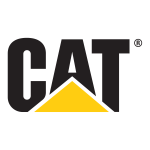Program updates from Caterpillar Safety Services enhance and expand job site safety culture

Caterpillar Safety Services, in its fiftieth year of operation, incorporates current research and approaches to encourage safety excellence within organizations. It has recently launched two new updates to its programs that contribute to resilient safety cultures: an updated Safety Perception Study, and a program focused on human and organizational performance.
Safety today is less of a box-ticking exercise and more a true measure of employee engagement. Caterpillar Safety Services assists companies with improving the four components of a resilient safety culture, where safety is approached proactively, and all team members take ownership of safety.
These components include:
- System - clearly defined safety expectations embedded in policies and procedures to identify and mitigate risk.
- Mindset - a shared mindset that safety is everyone's responsibility, people make mistakes, and an environment of openness that makes people feel safe to speak up.
- Leadership - specific, consistent leadership behaviours at all levels of the organization that positively influence people toward safe work.
- Ownership - occurs when all levels fully engage in the creation and continuous improvement of the safety system.
Survey analyzes safety culture within organizations
The Safety Perception Survey analyzes an organization's safety culture. It has been updated with new language and modern concepts of safety culture excellence, adding questions related to psychological safety as well as human and organizational performance.
New reports are streamlined with more modern visualization of the data. They measure five safety activities - hazard identification, event learning, inspections, near miss, and safety meetings - and address 11 cultural indicators, including caring climate, employee involvement, feedback, management credibility, training effectiveness, and risk reduction. Importantly, they also show how safety is perceived differently among employees, supervisors, and managers.
A framework for human and organizational awareness
Human and organizational performance is a framework concept for talking about safety and creating a resilient safety culture. It's a mindset that allows organizations to build more error-tolerant systems by teaching leaders that expecting perfection from workers, processes, or procedures is not realistic.
Traditionally, safety system management involves designing policies, standard work, and processes that assume work happens in a straight line. This does not account for organizational factors that can disrupt the system, such as employees not having the right tools for the job and adapting or making tradeoffs because they still need to meet production targets. Nor does it account for individual factors that impact a worker's awareness, or lapses in attention due to events in their life such as family emergencies. When workers deviate from the safety plan or make mistakes under the traditional model, they may be scrutinized or punished to attempt to improve safety, but this can have the opposite effect and lead to a weaker safety culture.
Caterpillar Safety Services uses human and organizational performance principles to apply a new understanding of human behaviour to safety. Leaders create an environment where employees feel empowered to speak up to share their ideas, struggles, and mistakes. The organization learns to improve its safety system continuously. Through recognition of workers' positive contributions, they want to be more involved, resulting in a more engaged and proactive safety culture with improvements in morale, retention, efficiency, and profitability.
Caterpillar Safety Services assists organizations with implementation of human and organizational performance principles through its Leadership Development and Coaching program. Tailored to the specific needs and objectives of the individual leaders, the program includes a mix of workshops, assessments, and individual face-to-face sessions. It helps each leader understand their strengths and areas for development in safety management, demonstrates how a leader impacts the safety culture, and creates personalized development plans for all leaders that align with organizational goals and procedures.



